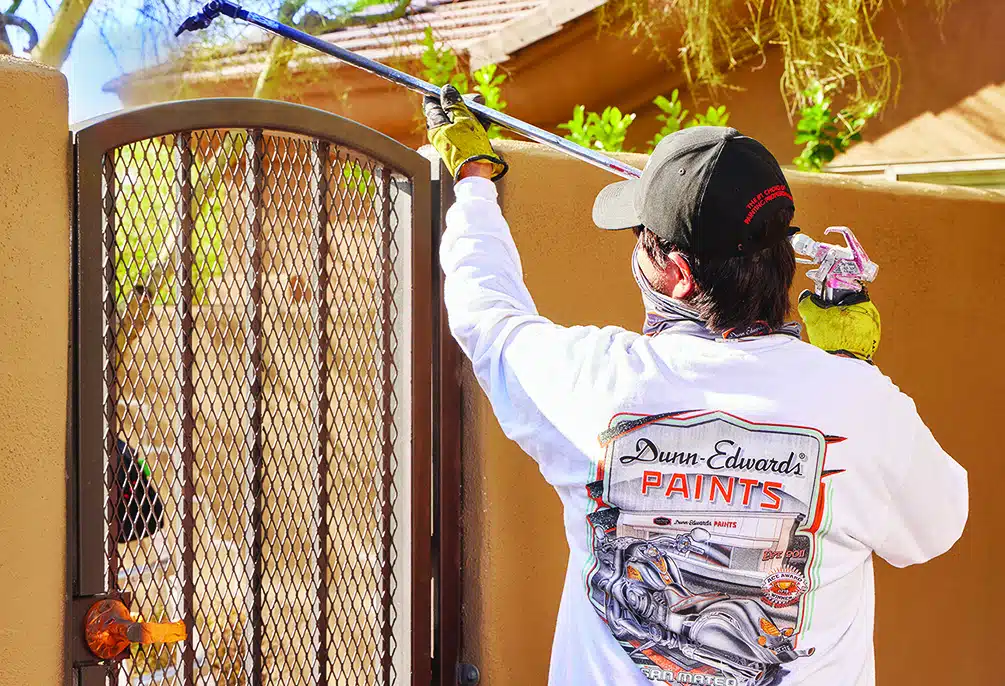
ENVIRONMENT — RAVOC
What is VOC ?
A VOC is a “Volatile Organic Compound”. The way a chemist uses that phrase, the word “volatile” describes a liquid that evaporates at room temperature, and the word “organic” means it is a compound that contains carbon. Thousands of different VOCs, some natural and some man-made, can be found in the air. Most natural VOCs are emitted from biogenic sources such as trees and vegetation. The primary man-made sources of VOCs are motor vehicle exhaust, unburned gasoline, and solvents.
On the continental scale, over 60% of the VOCs emitted into the atmosphere come from natural sources. Emissions from architectural coatings account for less than 1% of total VOCs. In paint and coatings, VOCs are used as solvents, or thinners, that work with the resin – the part that binds together all the ingredients of the paint and sticks them on to the wall – to get good performance and durability. “VOC content” means the weight of VOC per volume of product, and is usually measured as grams per liter (g/L).
VOC is not a technical term, however; it is a regulatory term that varies in meaning across countries, state and local jurisdictions, and regulated products. In general, VOCs are regulated with the intention of improving outdoor air quality in smoggy urban areas, because they may contribute to the formation of ozone – a main ingredient of smog. But – what may be regarded as a VOC for one purpose, in one place and time, may not be regarded as a VOC for another purpose, or in another place and time.
When is a VOC or not VOC?
The simple answer to this question is: It all depends.
At the federal level, a VOC is not counted as a VOC if U.S. EPA designates it as an “exempt compound” after it is proved to be “negligibly reactive” – which means it has no more ozone-forming potential than the low-reactive compound ethane. An exempt compound is still volatile, still contains carbon, and has some degree of reactivity. It just doesn’t count as a VOC. At the state and local levels, sometimes a VOC is an exempt compound in one jurisdiction, but not in another jurisdiction; or a VOC may be exempt for one purpose, but not for another purpose in the same jurisdiction.
Throughout the United States, a VOC is excluded from the calculation of VOC content for consumer products (except for paint!) if it is a “low vapor pressure compound” – which means it has a vapor pressure no greater than 0.1 mm Hg @ 20°C. A low vapor pressure compound may be volatile, still contains carbon, and may be more reactive than ethane – but it doesn’t figure in the calculation of VOC content for consumer products.
In the European Union, a VOC is not regarded as a VOC if it has an initial boiling point above 250°C (482°F). This is why Texanol (a common latex paint cosolvent) is not regulated as a VOC in the European Union, although it is regulated in the United States.
So what does "Zero VOC" mean ?
The phrase “Zero VOC” can be used to mean a number of different things when describing the VOC content of products – which is not a problem, so long as the meaning is clearly defined whenever the phrase is used. For example, Zero VOC can mean:
- VOC content at “Non-Detect” levels, as determined experimentally by EPA Test Method 24. Unfortunately, this test method (although the “official” method) is widely recognized as being very unreliable for waterborne coatings with VOC contents below 100 g/L. To achieve “Non-Detect” levels, a company may literally run EPA Test Method 24 as many times as it takes to generate a zero or negative number.
- VOC content near “Non-Detect” levels, as determined experimentally by test method ASTM D 6886. This test method is far more accurate than EPA Method 24 – so accurate, in fact, that it can detect residual trace amounts of VOC in all “Zero VOC” paints. Trace amounts of VOC can even be found in tap water. Dunn-Edwards is one of the few paint companies using this test method to determine VOC content – as shown on labels and product data sheets for our premium Low Odor / Zero VOC paint line, EVEREST®.
- No VOC content, as calculated from product formulation data. This is an acceptable alternative to EPA Method 24 for purposes of labeling products with their Maximum VOC Content, as required under various regulations. If this varies from test results of EPA Method 24, however, EPA regards the variance as proof that the product formulation data was incomplete or erroneous.
- Material VOC content at or below 5 g/L. This is based on an interpretation of the SCAQMD (South Coast Air Quality Management District) Rule 314 exemption for “Zero VOC equivalent” coatings.
- No VOC used in the solvent component of a resin/solvent system. This is the basis for how Dunn-Edwards defines “Zero VOC” to mean “no organic solvents added.” (Trace amounts of VOC – up to 2 g/L – may be present as residual components of other ingredients.) This is consistent with the goal of paint regulation: to reduce the amount of organic solvent in resin/solvent systems. The development of resins that perform well without VOC has been, and continues to be, the greatest challenge to coatings technology. Achieving high-performance coatings with no added organic solvent – such as our EVEREST® line – is therefore an accomplishment worthy of recognition.
What does "Low VOC" or "Ultra-Low VOC" mean ?
Prior to regulation, typical solventborne paints had VOC contents up to 450 g/L, and typical waterborne paints had VOC contents up to 250 g/L. Given that historical context, and the VOC reductions made possible by technological advancements in the paint industry, Dunn-Edwards uses the phrase “Low VOC” to describe any coating with a VOC content at or below 150 g/L (except for Ultra-Low VOC and Zero VOC coatings). Also, Dunn-Edwards uses the phrase “Ultra-Low VOC” to describe any coating with a VOC content at or below 50 g/L (except for Zero VOC coatings). Because VOCs are the main source of odor in paint, lower VOC products have less odor.
But aren't VOC'S toxic ?
Many different compounds are considered “VOC” – some VOCs are toxic, and other VOCs are not. All of Dunn-Edwards latex paints are Zero Toxic – they contain no toxic air contaminants or hazardous air pollutants of any kind. While most other paint manufacturers continue to use ethylene glycol (EG) – a designated toxic compound – as a cosolvent in latex paints, all Dunn-Edwards products are “EG-Free™ .” Where needed, Dunn-Edwards substitutes propylene glycol, a non-toxic alternative that is also used in foods, cosmetics, and pharmaceuticals.
What is Reactivity-Adjusted VOC Content(RAVOC)?
Paint and coatings have long been regulated to limit their VOC content, with the intention of improving outdoor air quality. When VOCs evaporate into the air, while nitrogen oxides from combustion are present, they may promote the formation of ozone, a main ingredient of urban smog. VOC content has become the primary indicator of environmental acceptability for coatings. This approach, however, has serious limitations because it does not consider VOC reactivity. “Reactivity” means the ability of a VOC to promote ozone formation. Thousands of different VOCs may be present in the air. Different VOCs have different degrees of reactivity – some may be up to 100 times more reactive than others. Current regulations place limits on the amount of VOC in coatings, without regard to reactivity (beyond exempting a few compounds that are designated as “negligibly reactive”). Consequently, VOC content alone says very little about the potential air quality impact of a coating. Reactivity-adjusted VOC content (RAVOC) ratings are a much better way to measure VOC. Dunn-Edwards is now revising product labels to include RAVOC ratings along with standard VOC content.
How does RAVOC work?
RAVOC ratings adjust the VOC content to reflect the potential air quality impacts of the specific VOCs used, relative to the average mix of all VOCs in the air. For example: If the VOC content of a product is 100 g/L, and the RAVOC rating is 50 g/L, this tells you that the VOCs used in this product have only half the air quality impact of an equivalent amount of average VOCs. RAVOC ratings are calculated using Maximum Incremental Reactivity (MIR) values developed by Dr. William P.L. Carter at the University of California, Riverside. The validity and usefulness of MIR values are widely accepted in the scientific community, and both U.S. EPA and the California Air Resources Board have used MIR values in reactivity-based rules for aerosol coatings.
Are RAVOC ratings required for paint ?
No, RAVOC ratings are not required on paint labels at this time. Dunn-Edwards, however, voluntarily provides this information to better inform consumers about the relative air quality impacts of different product choices. We believe that the disclosure of RAVOC ratings will, over time, become a standard practice in the paint industry.







